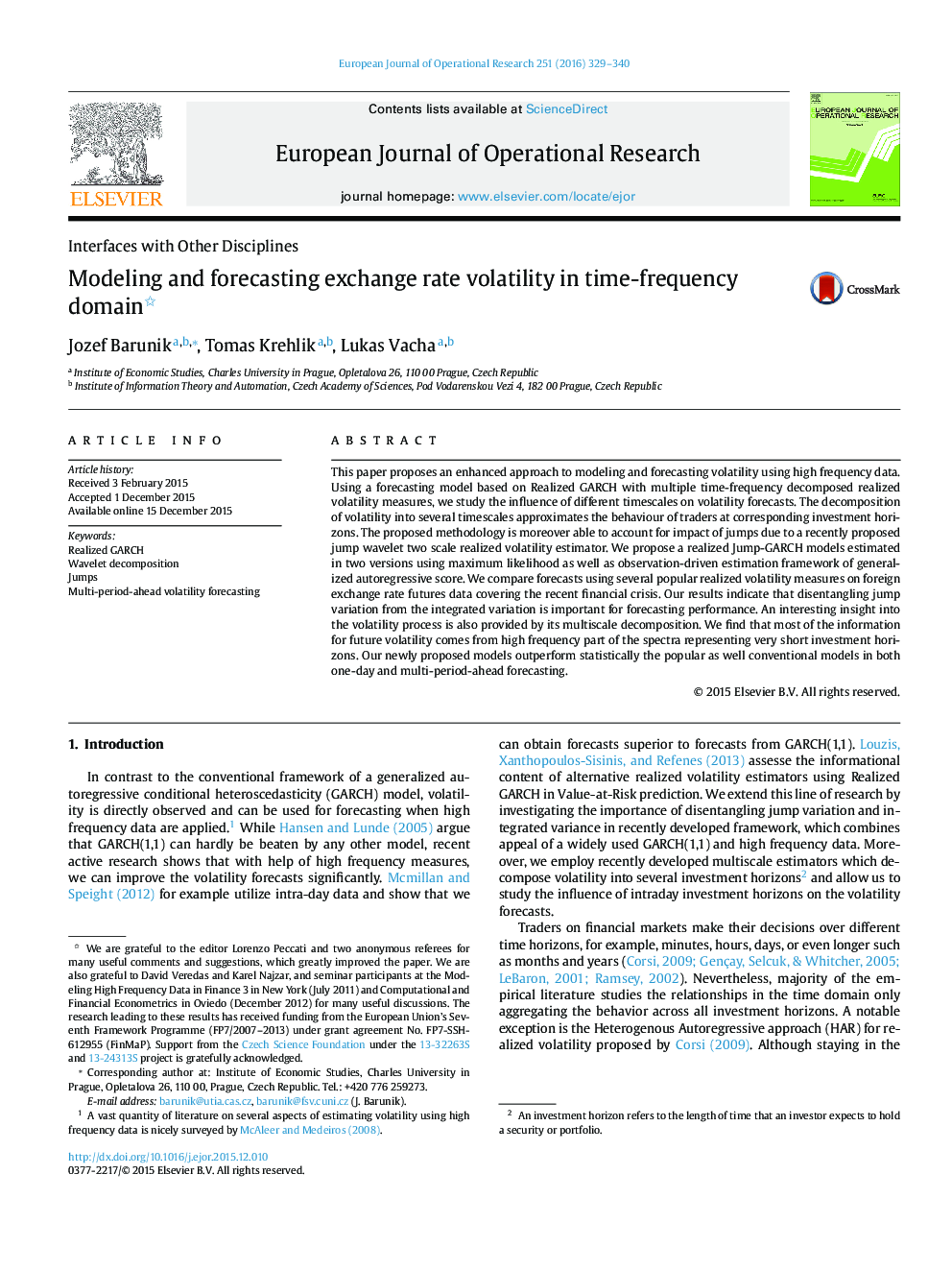| Article ID | Journal | Published Year | Pages | File Type |
|---|---|---|---|---|
| 480652 | European Journal of Operational Research | 2016 | 12 Pages |
•We propose a time-frequency approach to modeling and forecasting volatility.•The methodology is based on the decomposition of volatility into several time scales and jumps.•We compare performance of the model to several realized volatility measures.•We find that most of the information for future volatility comes from high frequency part of the spectra.
This paper proposes an enhanced approach to modeling and forecasting volatility using high frequency data. Using a forecasting model based on Realized GARCH with multiple time-frequency decomposed realized volatility measures, we study the influence of different timescales on volatility forecasts. The decomposition of volatility into several timescales approximates the behaviour of traders at corresponding investment horizons. The proposed methodology is moreover able to account for impact of jumps due to a recently proposed jump wavelet two scale realized volatility estimator. We propose a realized Jump-GARCH models estimated in two versions using maximum likelihood as well as observation-driven estimation framework of generalized autoregressive score. We compare forecasts using several popular realized volatility measures on foreign exchange rate futures data covering the recent financial crisis. Our results indicate that disentangling jump variation from the integrated variation is important for forecasting performance. An interesting insight into the volatility process is also provided by its multiscale decomposition. We find that most of the information for future volatility comes from high frequency part of the spectra representing very short investment horizons. Our newly proposed models outperform statistically the popular as well conventional models in both one-day and multi-period-ahead forecasting.
